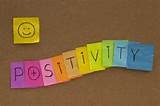25 October 2016

Music
This has been our second music session since the first week in trimester one. I was really looking forward to this session, as I have a passion for music and enjoy the theory behind it.

Once welcomed back into the class it was explained to us what our learning intentions were for the session. This is a very significant part of the session for me as it gives me an overview of what I am going to be doing throughout the lesson and what I should be aiming to come away from the class knowing. I feel that this is a great way to start my future lessons as I as a learning like knowing what I am going to be doing and it gives children clarity of the lesson and they know what the purpose is. (Learning Spy, 2012)




How this … can turn into this.
Futhermore, we explored the concept of ‘improvisation’. This is when you play a series of notes randomly in response to others pieces of music playing. We were given a xylophone and a set of beaters. I didn’t realise how important the choice of beater was whilst playing a music instrument, as it seriously impacts the sound quality.


We explored an octave of notes: ‘CDEFGABC’ and also a pentatonic scale which consisted of ‘CDEFGA’. This was an enjoyable experience had by all and it was good to be able to not have to worry about playing the correct notes- as they all were right- during the learning experience. This would be good when working with the children as it takes the pressure off them and allows them to compose freely.
.
Learning Spy. (2012) Learning Objectives and Why we Need ’em. [Online] Available at: http://www.learningspy.co.uk/learning/learning-objectives-why-we-need-em/
[Accessed: 26/10/2016]
Dance
It was evaluation week of our performance and as a class we were videoed so that we could do this effectively. After practicing in our groups, Diarmuid the head of the Integrated Arts module, came into the class and set up a wide lens camera to video our performance as a class. This was a daunting experience as I did not want to make a mistake and felt a bit more pressure than normal. I was excited to see how we all looked on camera though!
This is our final performance as a class:
 ( Screenshot)
( Screenshot)
After this, we took the time to sit down and evaluate our dance as a class. We were given sheets that had the strategy three stars and a wish. It is very important to reflect and evaluate a piece of work at the end, as it allows you to receive feedback, evaluate your own self and others, find sections that may need improved upon or identify sections that were done really well. This is imperative for future development and progression. (Ludbrook, 2012)

When working with children of all ages, it is important to recognise what they did right and for them to receive praised for that, as well as given encouragement for areas that may need improved upon. This technique allows children to receive feedback in a positive way that they are able to respond to. (Thompson, 2012)
During this evaluation we each evaluated ourselves and one of the peers in our group. There was an evaluation sheet with some buzz words on it to help us. This was a very useful resource and would be whilst carrying this out with children. I feel that this was a massive help as it covered the main points that we were evaluating clearly. Overall this was a very enjoyable experience had by all and i would feel comfortable carrying out this type of activity within a primary setting.
Reflections of Dance Inputs as a Whole:


Thompson, H. (2012) Effective Marking: Teachers Guide. [Online] Available at:
https://educatingmatters.files.wordpress.com/2012/04/effective-marking-teachers-handbook-2011-2012-new1.pdf
[Accessed: 26/10/2016]
Ludbrook, H. (2012) Why it is important to Evaluate Learning Activities. [Online] Available at: https://prezi.com/xi2nkyblnayu/why-it-is-important-to-evaluate-learning-activities/
[Accessed: 26/10/2016]

